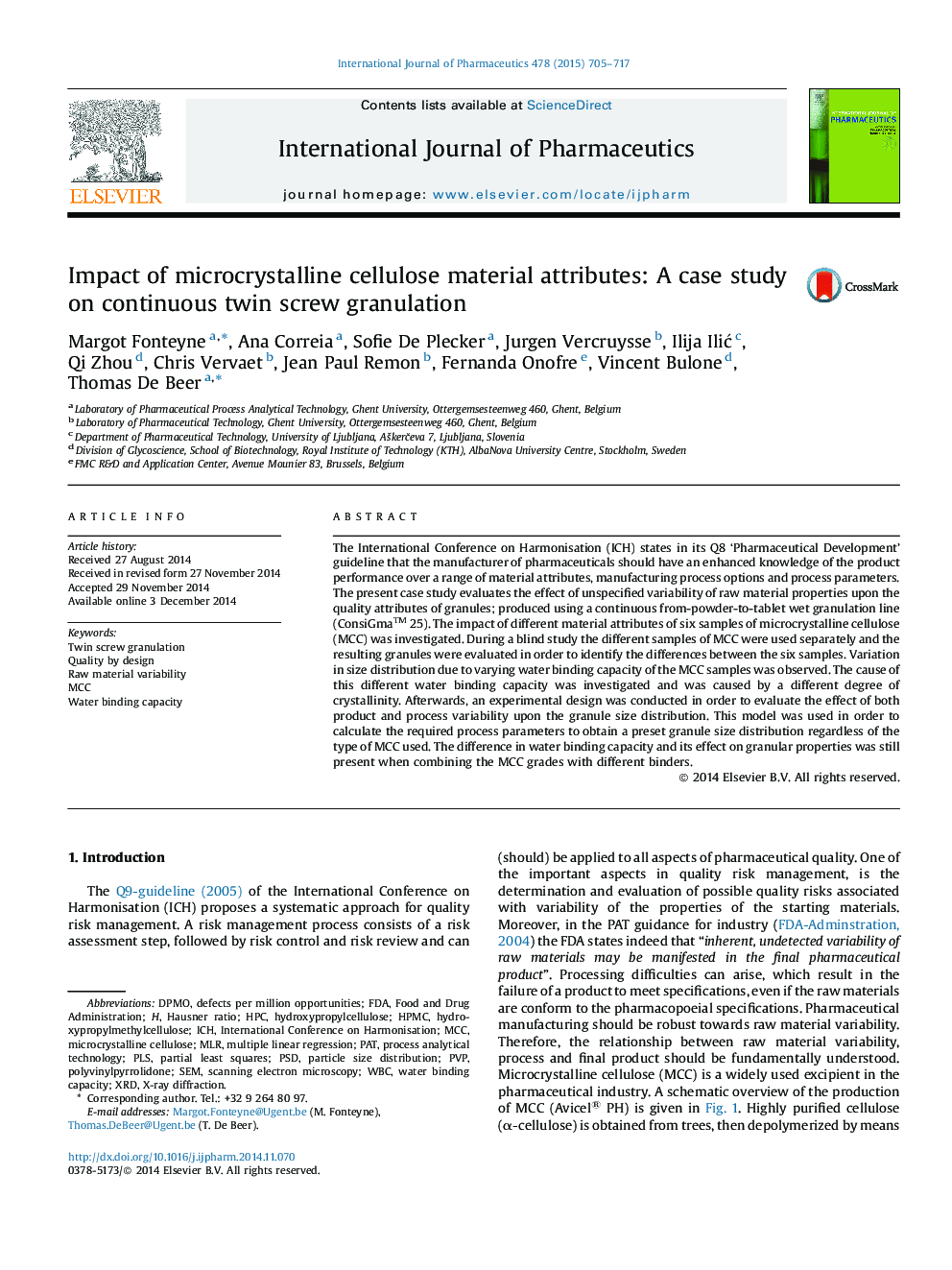| Article ID | Journal | Published Year | Pages | File Type |
|---|---|---|---|---|
| 2501757 | International Journal of Pharmaceutics | 2015 | 13 Pages |
The International Conference on Harmonisation (ICH) states in its Q8 ‘Pharmaceutical Development’ guideline that the manufacturer of pharmaceuticals should have an enhanced knowledge of the product performance over a range of material attributes, manufacturing process options and process parameters. The present case study evaluates the effect of unspecified variability of raw material properties upon the quality attributes of granules; produced using a continuous from-powder-to-tablet wet granulation line (ConsiGma™ 25). The impact of different material attributes of six samples of microcrystalline cellulose (MCC) was investigated. During a blind study the different samples of MCC were used separately and the resulting granules were evaluated in order to identify the differences between the six samples. Variation in size distribution due to varying water binding capacity of the MCC samples was observed. The cause of this different water binding capacity was investigated and was caused by a different degree of crystallinity. Afterwards, an experimental design was conducted in order to evaluate the effect of both product and process variability upon the granule size distribution. This model was used in order to calculate the required process parameters to obtain a preset granule size distribution regardless of the type of MCC used. The difference in water binding capacity and its effect on granular properties was still present when combining the MCC grades with different binders.
Graphical abstractFigure optionsDownload full-size imageDownload high-quality image (140 K)Download as PowerPoint slide
